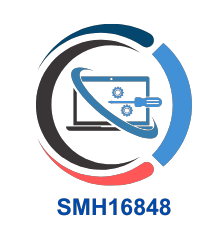Quote trading has evolved into a powerful strategy for seasoned investors looking to capitalize on market inefficiencies and real-time price movements quote trade. Unlike traditional methods that focus solely on fundamental or technical analysis, quote trading zeros in on bid-ask spreads, order book dynamics, and rapid execution. For those with the right tools and expertise, it offers a competitive edge. In this post, we’ll explore advanced quote trading tactics that experienced investors use to outmaneuver the market.
Understanding the Microstructure of the Market
Before deploying any quote trading strategy, it’s essential to understand the underlying microstructure of the market. This includes how orders are matched, the behavior of market makers, the role of high-frequency traders, and the impact of latency. Experienced traders often leverage Level II data to monitor depth-of-book changes in real time, giving them insight into buying and selling pressure well before prices move.
Exploiting Bid-Ask Spread Inefficiencies
One of the most lucrative opportunities in quote trading lies in identifying inefficiencies in bid-ask spreads. In volatile markets or during periods of low liquidity, spreads can widen abnormally. Sophisticated traders take advantage of these moments by placing limit orders at strategic positions within the spread. By doing so, they can profit from price convergence without needing large directional moves.
Layering and Order Book Spoofing Detection
Layering involves placing multiple orders at different price levels to create the illusion of demand or supply. While illegal if used to manipulate, being able to detect this behavior in others can provide valuable insight. Skilled quote traders watch for sudden shifts in large limit orders being placed and pulled, signaling the potential presence of spoofers. Adjusting strategy in real time to avoid being trapped by false liquidity is crucial.
Quote Stuffing Awareness and Response
Quote stuffing is another tactic used by high-frequency trading firms to overwhelm competitors by flooding the market with orders. These orders are canceled almost instantly but can distort pricing and delay execution for others. Experienced traders guard against this by using direct market access (DMA) platforms with low-latency connections and by setting up filters to ignore noise from such artificial quote activity.
Latency Arbitrage Techniques
Latency arbitrage involves exploiting time differences between data feeds from different exchanges. Sophisticated quote traders can detect price changes on one venue milliseconds before they are reflected elsewhere. To capitalize on this, many set up colocated servers near exchange data centers, enabling faster reaction times than competitors relying on slower retail connections.
Dynamic Order Flow Analysis
A core tactic of advanced quote trading is real-time order flow analysis. This involves tracking the rate at which orders are filled, canceled, or replaced to assess market sentiment. A surge in aggressive market buys, for instance, can indicate impending upward pressure. By reading the flow and adapting positions accordingly, traders can stay one step ahead of larger moves.
Utilizing AI and Algorithmic Assistants
Machine learning has entered the quote trading arena in a major way. Algorithms trained on millions of historical order book snapshots can now identify repeating patterns and recommend trade actions. These tools help filter false signals, predict quote behavior, and execute trades more efficiently. However, these systems are only as good as the data fed into them, so experienced investors ensure they’re working with clean, real-time information.
Risk Management in High-Speed Environments
Quote trading requires tight risk controls due to the sheer speed and volume of transactions. Seasoned investors often use automated kill-switches to limit losses and maintain strict exposure thresholds per strategy. Slippage and partial fills are also closely monitored, and trades are structured to exit quickly if market behavior deviates from expected patterns.
Conclusion
Advanced quote trading is not for the faint of heart. It requires a combination of technical infrastructure, market intuition, and constant adaptation to shifting conditions. But for those with the skills and discipline to master it, quote trading opens the door to consistent edge generation in some of the most competitive corners of the financial markets. Whether through latency arbitrage, spread exploitation, or real-time order flow tactics, the tools are available — it’s the execution that separates the amateurs from the elite.

